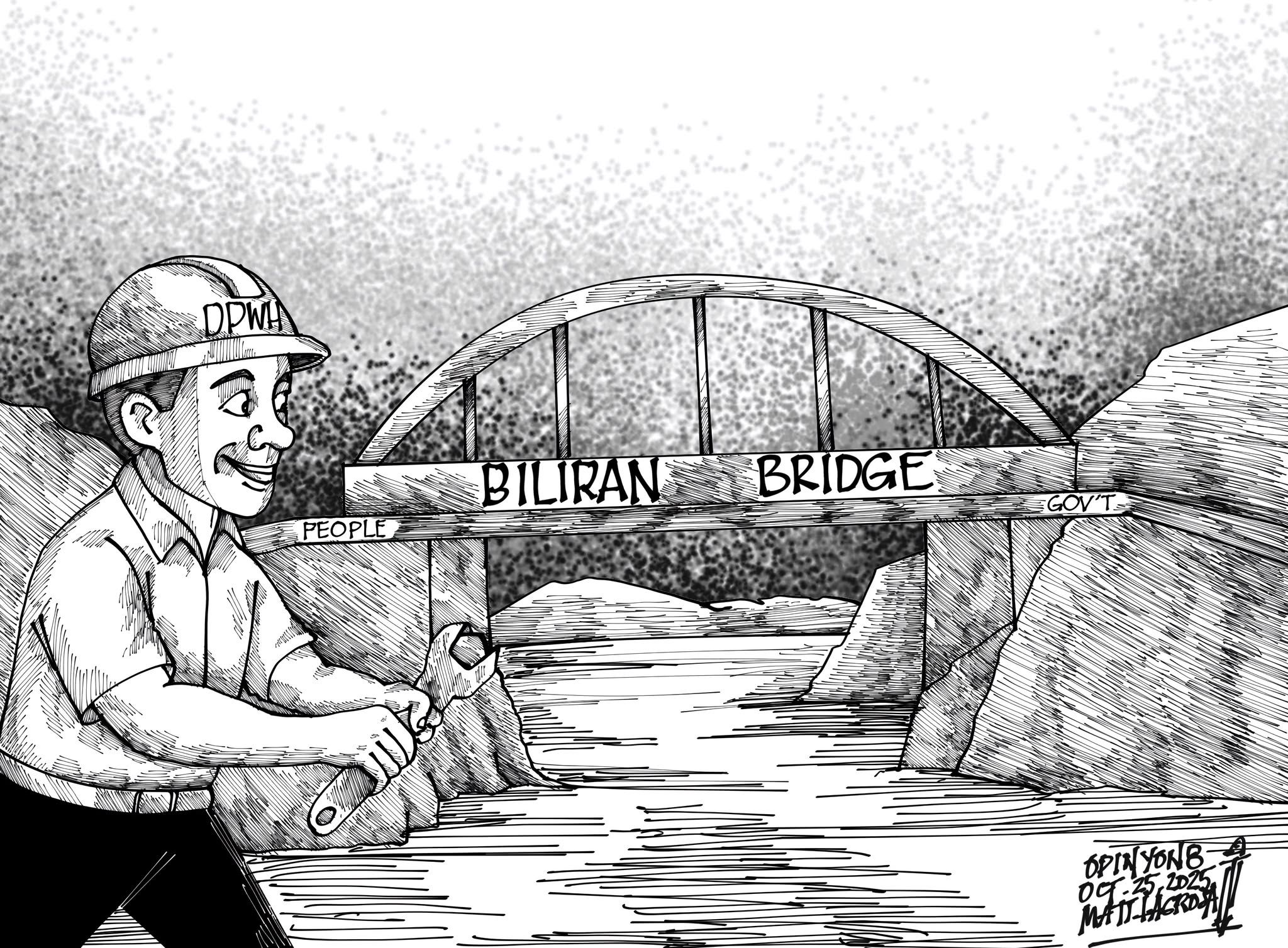In the Philippines, where natural calamities and aging infrastructure constantly test our resilience, the efficiency of government response can mean the difference between inconvenience and catastrophe.
The recent swift repair and reopening of the Biliran Bridge is a timely example of how fast, coordinated government action can restore not just physical connections, but public confidence as well.
For too long, the public has grown accustomed to hearing about delayed projects, red tape, and repairs that take years to finish.
That’s why when government offices, particularly those in charge of vital infrastructure like the Department of Public Works and Highways (DPWH) act with urgency and competence, it deserves replication.
The Biliran Bridge rehabilitation, completed in under a year despite logistical challenges, proves that with clear leadership and focused execution, efficiency in government is possible.
But speed alone isn’t enough. Efficiency means anticipating problems before they become emergencies, conducting regular inspections, prioritizing maintenance, and allocating funds with transparency.
The old habit of waiting for a structure to fail before acting must end. Our bridges, roads, and flood controls are not just assets, they are arteries of economic life.
Neglecting them costs more than repairs; it disrupts livelihoods and puts lives at risk.
Equally vital is communication. The public deserves real-time updates, clear advisories, and accountability from the agencies they fund.
When citizens see visible progress and timely action, trust in governance grows stronger.
Efficient infrastructure response reflects a government that values both time and taxpayers.
The recent positive examples must not remain isolated achievements but a model for nationwide practice.
If we can make swift, smart, and sincere action the new standard, then every repaired bridge and rebuilt road becomes more than a project, it becomes a promise kept.
#WeTakeAStand #OpinYon #OpinYonNews #Editorial #BiliranBridge #DPWH
